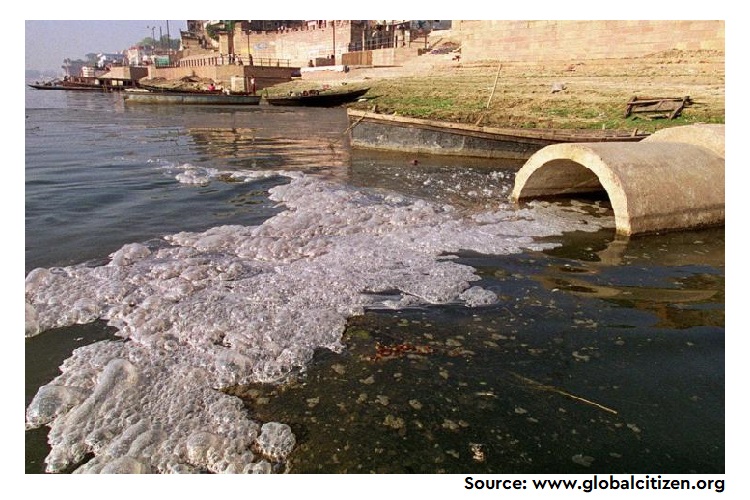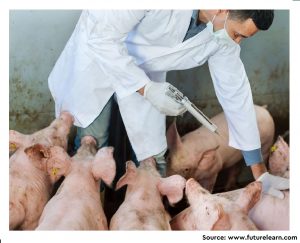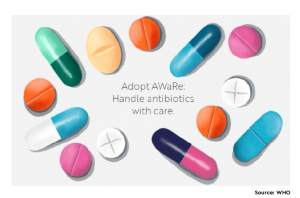Antibiotics are known as life saver drugs that can act against bacteria. However the increasing problem of antibiotic resistance (ABR) has raised an alarm and has even attracted the attention of the World Health Organization (WHO). As per the guidelines from WHO, many countries including India framed the National Action plan on ABR. One of the major reasons for increasing incidence of ABR is the misuse of antibiotics at multiple levels. One of them is our healthcare system i.e. hospitals. It has been seen that in rural communities of developing countries, the waste from the hospital gets entry into the rivers, dams and streams. Further, the untreated water from these places is used as a source of drinking water. Sadly, these water resources could possibly be contaminated antibiotics and antibiotic resistant bacteria. Thus it seems that proper quality checks on these channels must be undertaken. Therefore, the authors of the present study made an attempt to evaluate the presence of potential antibiotic resistant bacteria in hospital sewage samples from Marathwada region of Maharashtra, India.
In this study, a total of six samples were collected from different sites in Aurangabad, Maharashtra region. Following isolation, the antibiotic sensitivity profile of these bacteria was determined. Also, the bacteria showing resistance to three or more antibiotics were considered as the multiple antibiotic resistant bacteria [MAR] and MAR index value for each sample was calculated. In general, three Gram negative (Klebsiella pneumoniae,Escherichia coli, Pseudomonas species) and three
Gram positive bacteria (Staphylococcus aureus, Enterococcus faecalis and Streptococcus pyogenes) were found. It was observed that all of the 6 samples showed the presence of antibiotic resistant bacteria towards different antibiotics. This includes beta lactam class [85%], then for Tetracycline [58%], Cephalosporin [58%], Quinolones [52%] and Gentamicin [45%]. Among the bacteria, E. coli was found to be more prevalent showing ABR to all tested antibiotics. The present study highlights how hospital sewage can act as a source of ABR in developing countries. Thus highlights the need for effective guidelines for better treatment of hospital waste and correct disposal measures.
Gram positive bacteria (Staphylococcus aureus, Enterococcus faecalis and Streptococcus pyogenes) were found. It was observed that all of the 6 samples showed the presence of antibiotic resistant bacteria towards different antibiotics. This includes beta lactam class [85%], then for Tetracycline [58%], Cephalosporin [58%], Quinolones [52%] and Gentamicin [45%]. Among the bacteria, E. coli was found to be more prevalent showing ABR to all tested antibiotics. The present study highlights how hospital sewage can act as a source of ABR in developing countries. Thus highlights the need for effective guidelines for better treatment of hospital waste and correct disposal measures.
To learn more, please visit the website of African Journal of Biotechnology (Link).







